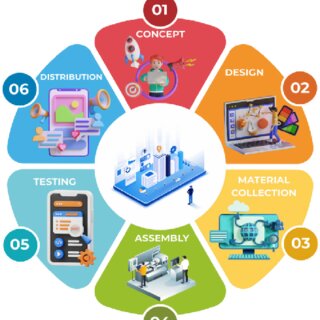Roles in Extreme Programming - Balancing Responsibilities for Agile Success
Extreme Programming (XP) is an agile development methodology that emphasizes collaboration, adaptability, and efficient delivery of software. A significant part of XP’s success lies in the well-defined roles that ensure every aspect of development is managed effectively. In this blog post, we will explore the key roles within an XP team, focusing on how each role contributes to the successful execution of projects and how this structured responsibility distribution enhances team efficiency and software quality.
The Role of the Programmer
In XP, the programmer is primarily responsible for writing the system code and unit tests. Programmers are at the core of transforming user stories into functional software.
- Technical Decision-Making: Programmers have the authority to make technical decisions about how to implement functionalities. They estimate the time needed for each user story and evaluate risks involved in the process. This decision-making capacity empowers programmers, allowing them to be proactive and solution-oriented while keeping the development process agile.
- Communication with Clients: A critical aspect of the programmer’s role is maintaining fluid communication with the client. This ongoing dialogue ensures that the features being developed align with user requirements and provides an avenue for quick resolution of ambiguities.
By keeping programmers involved in both technical development and customer interaction, XP facilitates a close feedback loop that leads to rapid adjustments and precise feature implementation.
Programmer’s Responsibilities in XP
Client as the Project Leader
The client is an integral part of an XP project, responsible for defining the scope and prioritizing features.
- User Stories and Functional Tests: The client writes user stories—short descriptions outlining a feature from an end-user perspective. These stories form the basis of the development tasks, and their prioritization helps direct the iteration focus. Additionally, the client collaborates with testers to define functional tests that validate the software.
- Setting Priorities: The client’s role involves deciding which features are most valuable for each iteration. This prioritization is crucial for ensuring that the development team focuses on features that deliver the highest business value first.
- Project Guidance: Acting as the project leader, the client is responsible for steering the project by continually revising priorities, ensuring that the software meets evolving business needs.
The client’s role is unique in XP since they represent the end user’s interests and take an active part in guiding the development, thus ensuring business alignment.
The Importance of the Tester Role
Testers are responsible for verifying the functionality of the software, ensuring that each user story is correctly implemented and fulfills the client’s requirements.
- Acceptance Testing: Testers work closely with the client to design acceptance tests for user stories. These tests confirm that each feature delivers its intended value and meets the specified requirements.
- Continuous Feedback: Regular execution of these tests provides immediate feedback to the developers, ensuring that any issues are identified and resolved promptly. This helps maintain the quality of the product throughout the development process.
Testers also develop tools to automate the testing process, which supports the entire team by streamlining validation and ensuring that errors are caught early.
Monitoring Manager and Team Speed
The monitoring manager, or tracker, is responsible for tracking the progress of the team and providing valuable insights.
- Tracking Progress: The tracker compares the time estimated for tasks with the actual time taken to complete them. This information is used to refine future estimates and improve the overall accuracy of planning.
- Team Speed Metric: One of the key metrics used by the tracker is team speed, which reflects the actual progress compared to planned progress. By tracking team speed, the tracker helps ensure that the project is on schedule, and identifies areas where adjustments may be needed.
The role of the tracker is essential for keeping the team aligned with the project timeline and providing the transparency needed for continuous improvement.
The Coach and Manager Roles
Coach and manager roles support the overall development process by guiding and coordinating the team.
- Coach: The coach is responsible for overseeing the XP process and ensuring that the team adheres to XP principles. The coach provides guidance, helps solve problems, and encourages best practices. They play a particularly important role in the early stages of XP adoption or when the team is facing challenges in following XP principles effectively.
- Manager: The manager acts as a liaison between the programmers and the client. They ensure that the development environment is conducive to productivity, fostering collaboration, and removing obstacles that might hinder progress. The manager helps coordinate activities to ensure alignment across the team, sometimes even taking on the role of a project leader if required.
Both roles focus on facilitating team efficiency—while the coach emphasizes XP practices and guidance, the manager concentrates on coordination and smooth workflow.
Role of Coaches and Managers in XP
The success of Extreme Programming as an agile methodology depends heavily on the well-defined roles within the team. Programmers, clients, testers, trackers, coaches, and managers each play a crucial part in ensuring effective communication, maintaining quality, and driving the project towards success. By understanding and implementing these roles effectively, XP teams can produce high-quality software that meets business needs and adapts to change quickly.
Each role is essential not only for the tasks they perform but for the collaborative environment they foster, allowing XP to thrive in dynamic and challenging development contexts. Explore the references provided to deepen your understanding of these roles and consider how they might be applied in your own agile teams to enhance productivity and quality.
